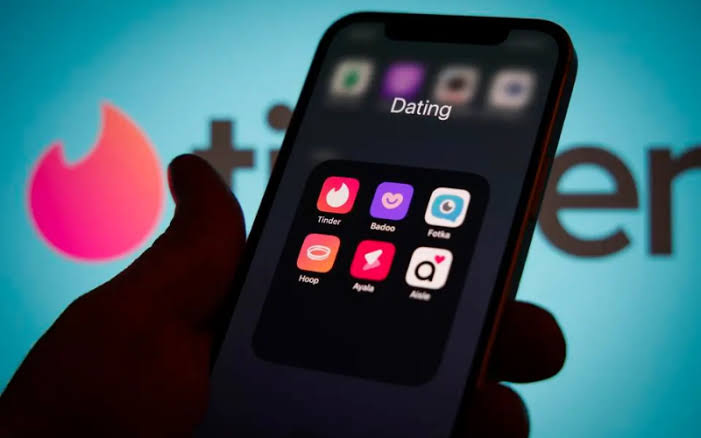
Let’s get one thing out of the way: the words “relationship check-in” don’t exactly scream “sexy Saturday night.”
They sound… formal. Clinical. A little like you’re about to fill out a feedback form at a performance review.
But here’s the truth: relationship check-ins are low-key magic.
Done right, they’re not about pointing fingers, airing grievances, or turning your love life into a corporate meeting. They’re about slowing down, checking in, and making sure the relationship you’re building still feels like home — for bothof you.
And the best part? You don’t need a therapy degree, color-coded Google Doc, or hours of free time. Just a little structure, a sprinkle of vulnerability, and a willingness to show up for each other.
Let’s break it down — conversationally, of course — with what a relationship check-in is, why it matters, when to do it, and how to make it actually useful (and maybe even fun).
What Even Is a Relationship Check-In?
Imagine this: You and your partner are sitting down — maybe over coffee, a walk, or even curled up in bed — and asking each other:
- “How are we doing?”
- “What’s been working?”
- “What’s been hard?”
- “What do we both need more or less of right now?”
That’s a check-in.
It’s not a fight. It’s not a trap. It’s not about fixing everything in one go.
It’s just about pausing the hustle of everyday life to tune in with each other — emotionally, mentally, maybe even physically — and making sure you’re both feeling seen, safe, and supported.
Why Relationship Check-Ins Are Low-Key Game Changers
Relationships don’t usually crash and burn out of nowhere. They tend to fizzle. Or slowly accumulate resentment. Or get stuck in autopilot.
Check-ins help you catch stuff early — before little annoyances become major problems, before disconnection turns into distance, and before “we’re too busy” becomes “we don’t even talk anymore.”
Here’s what they do really well:
- ✅ Open the door for honesty (without the heat of a fight)
- ✅ Build trust by showing you’re both invested
- ✅ Uncover unmet needs and unspoken expectations
- ✅ Celebrate wins — because not every convo should be about what’s wrong
- ✅ Remind you that you’re a team, not opponents
It’s emotional maintenance. Like taking your relationship to the gym. Or giving it a tune-up so it runs smoother — and lasts longer.
When Should You Do a Relationship Check-In?
Let’s be real — life is busy. Between work, errands, Netflix binges, and trying to find matching socks, you’re probably not looking to add more to your plate.
The good news? Check-ins don’t have to be long or frequent to be effective.
Here are a few popular rhythms that actually work for most couples:
Once a Week (The “Sunday Ritual”)
- Great for couples who like routine or have kids/schedules to juggle
- Keeps issues from piling up
- You can combine it with wine, a walk, or pizza night — make it cozy
Once a Month (The “Big Picture” Check-In)
- Perfect for digging deeper into goals, intimacy, habits, and dreams
- Helps you step back and look at the relationship from a 30,000-foot view
After Conflict or Big Life Stuff
- Moving in together, changing jobs, family drama — check in after things settle
- Ask: “How did we handle that? What did we learn about us?”
❤️ When Things Feel ‘Off’
- You don’t need to wait for a scheduled day. If one of you feels disconnected or weird, that’s the time to pause and check in
Okay But… How Do You Actually Do It? (Step-by-Step Guide)
Now that we’ve sold you on the idea, let’s talk about how to pull it off without it turning into a therapy session or a debate club.
Here’s your no-fuss, step-by-step guide:
Step 1: Set the Mood (Seriously)
This is not the time to multitask, scroll your phone, or wash dishes.
Choose a vibe that feels safe and relaxed. Light a candle, go for a walk, pour some wine, sit on the couch with snacks — whatever helps you both feel chill and connected.
Key tip: Phones off. Distractions down. This is sacred time.
Step 2: Start with Appreciation
Before diving into “what needs work,” start with what’s going well.
Each partner shares:
- “One thing I really appreciated about you this week is…”
- “Something I noticed and loved about our relationship lately is…”
This sets the tone with love, not critique. Plus, everyone loves being seen.
Step 3: Talk About What’s Working
Ask each other:
- “What’s been feeling good between us lately?”
- “Where do you feel most connected to me right now?”
- “What have we been handling really well as a team?”
This reminds you that even if there are struggles, you’re doing some things right.
Step 4: Gently Explore What Needs Attention
Now the deeper stuff.
Use questions like:
- “Is there anything that’s been bothering you lately — even a little?”
- “Have I said or done anything that hurt or annoyed you this week?”
- “What do you need more or less of from me lately?”
Pro tip: Use ‘I’ statements and speak from your experience, not accusation.
Instead of: “You never help around the house.”
Try: “I’ve been feeling overwhelmed with chores lately, and I’d love more help.”
Step 5: Check In On Intimacy
This can feel awkward at first, but intimacy check-ins are important.
Try:
- “How are you feeling about our physical/sexual connection?”
- “Are you feeling emotionally close to me lately?”
- “Is there anything you’d like to explore or bring back into our connection?”
Again — curiosity, not criticism. The point is closeness, not scorekeeping.
Step 6: Talk About the Future
This keeps you aligned and dreaming together.
Ask:
- “Is there anything coming up that we need to plan or talk about?”
- “What’s one thing we can look forward to together this month?”
- “What’s something we want to work on as a couple this season?”
Big or small — the goal is to stay on the same page, emotionally and practically.
Step 7: End on a Positive Note
Wrap things up with love. Try:
- “Thank you for talking with me. I really value this time.”
- “One thing I’m really excited about in our relationship is…”
- “I feel closer to you when we do this.”
Bonus points if you cuddle after. Or dance in the kitchen. Or order takeout and watch a comfort show together.
Tools, Prompts & Ideas to Keep It Flowing
If you want to spice up your check-ins or avoid awkward silences, here are some prompts and tools you can keep in your back pocket:
Quick-Fire Questions
- What made you feel loved this week?
- Did anything feel off between us?
- How can I show up better for you?
- What’s something small I can do that would make your day easier?
- What are you most proud of in us lately?
Optional Add-Ons
- Do a shared journal for check-ins if you’re long-distance or shy
- Use couples card decks (like “We’re Not Really Strangers” or “The And”)
- Play the “High/Low/Gratitude” game: Share your high point, low point, and one thing you’re grateful for
Common Pitfalls (And How to Avoid Them)
Like anything in relationships, check-ins take practice. Here are some common missteps and how to sidestep them:
Treating it like a performance review:
This is not about criticism or grades. It’s about connection.
Trying to fix everything immediately:
If heavy stuff comes up, make space to talk about it later. This isn’t a problem-solving sprint.
Avoiding hard topics:
It’s tempting to keep things surface-level. But intimacy grows when we’re honest — even when it’s vulnerable.
Only doing it when things are bad:
Make check-ins a regular rhythm, not just a last resort.
Let’s Be Honest: Will It Feel Awkward at First?
Probably. A little.
Especially if you’re not used to talking like this. It might feel clunky. Forced. Vulnerable. One of you might say, “Why are we doing this?” halfway through.
Do it anyway.
Every time you show up and try, you’re planting seeds of emotional safety, trust, and intimacy. And that? That’s relationship gold.
The Bottom Line: Don’t Wait for Disconnection to Reconnect
Check-ins aren’t a sign that something’s wrong. They’re a sign that you care enough to keep things strong.
So light the candle. Ask the weird questions. Laugh at the awkward silences. And keep showing up — imperfectly but intentionally.
Because the best relationships aren’t built in grand gestures. They’re built in quiet moments of “How are we doing?” and “What do you need?” and “Let’s grow through this together.”




